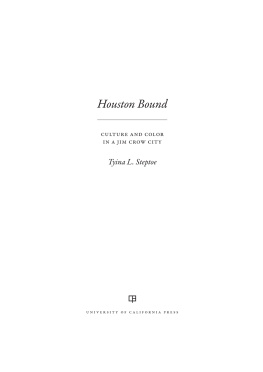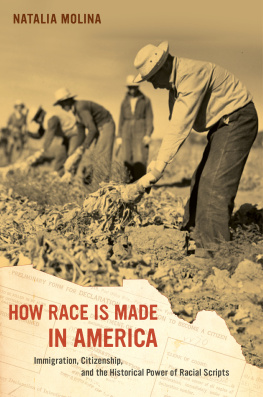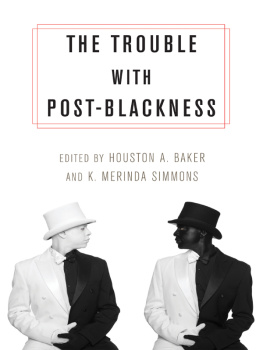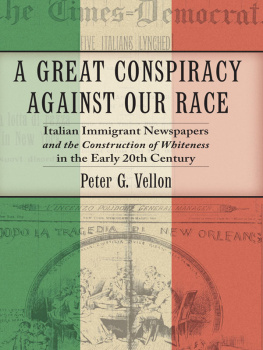Introduction
WHEN WORLDS COLLIDE
ON AUGUST 15, 1929, a seventeen-year-old migrant from Louisiana named Elizabeth gave birth to a baby girl on Live Oak Street in Houstons Third Ward. Originally from the Lafayette area, the unmarried woman of color probably had not lived in the city for long, and her early experiences in Houston were less than ideal. Sometime after arriving to the city, Elizabeth met a married man who had also moved from Louisiana. The two began an affair that resulted in a pregnancy. Elizabeth tried moving back to Louisiana, but her family refused to allow her to stay with them. Young and alone, she decided not to keep the child she carried. After returning to Houston and giving birth, she paid her midwife five dollars to strangle the newborn baby. The midwife refused, though. Elizabeth then asked her to call Arthur Berry, a black railroad worker from Shreveport who lived across the city with his wife, Leanna, a migrant from rural East Texas. The couple discussed Elizabeths predicament and quickly made the decision to adopt the child. One day later, Arthur and Leanna arrived to take the infant girl, named Mary Rose, from Third Ward to their home in Fifth Ward. There, they raised the daughter they affectionately called Mae for the next eighteen years.
The Berry family did not tell their relatives or neighbors that the baby they informally adopted was the product of an illicit relationship between a teenage girl and a married man. And twenty-nine-year-old Arthur Berry would hide from everyone, including his wife, the fact that he was the man who fathered that child after carrying on an affair with Elizabeth.
The story of the two women named Elizabeth and Leanna became an essential part of Berry family folklore, a tale Mary Rose passed down to her children and grandchildren after she learned the truth in 1960. The story Mary Roses familybiological and adoptedrepresented migrations that altered the shape and sound of black Houston.
But beneath those statistics lies a more complicated story of race and migration. Elizabeth and the Berry family were Negroes by law, but they were two different groups of African-descended people. Arthur Berry hailed from northwestern Louisiana, where the English language and Protestant faith dominated, and he and Leanna shared those cultural traits. Elizabeth and the majority of Louisiana migrants, on the other hand, migrated from the francophone southwestern part of the state, a region shaped by a history of contact between Africans, Indians, and French and Spanish settlers. A group from this region known as Creoles of color began to settle in Houston in the 1920s. The law categorized black Texans and Creoles of color as Negro; however, Creoles of color identified as a distinct groupa racial combination of black and white. When they made contact, the groups did not always agree on the definition of racial blackness, which complicated their relationships in segregated spaces. Black Texans and Creoles of color also noted cultural distinctions when they made contact in Houston. Their different racial identities, religious practices, languages, and even musical styles bore the imprint of an Afro-Anglo heritage versus an Afro-French/Afro-Spanish heritage of southwestern Louisiana. Transnational histories of colonization and slavery gave the southern portion of Louisiana a distinct racial legacy that distinguished that region from northern Louisiana and eastern Texas. Although The meeting of people from francophone Louisiana and anglophone African Americans is one legacy of the rural-to-urban migration experience.
Mary Rose Berry came of age in a society where these worlds converged. The Berry family settled into a section of Houston known as Fifth Ward, the part of the city most influenced by French-speaking migrants. To outsiders, Mary Roses community was one of Houstons many black neighborhoods. Yet the sights and sounds of Fifth Ward indicated the diversity among Houstons colored population. At her school, French words mingled with English on the playgrounds. When Mary Rose walked to school, she may have passed itinerant blues singers from East Texas plucking guitars on street corners or Louisiana-born musicians playing a music with accordions. Mary Roses churchgoing neighbors from Texas mostly worshipped at Protestant churches, but Creoles of color attended mass at Catholic churches. And while children from Texas laughed at the antics of Brer Rabbit, Creoles of color told stories of Compair Lapin. In Fifth Ward, two parts of the African diaspora connected, and their cultural practices indicated the multiplicity of the communitys residents.
Creoles of color and black Texans influenced the racial politics and culture of Mary Rose Berrys neighborhood. The two groups lived near one another and shared social space. Children from both groups attended the same schools, and their parents made contact at work. Differences in skin color and language could cause friction between the groups. At the same time, proximity led to some cultural ties. By the time she was eighteen, Berry had converted to Catholicism, and she attended the same parochial school as the children of Louisiana migrants. Her notions of culture and race were shaped by contact between people from either side of the Sabine River.













